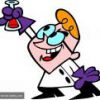 24
24@manmay..i checked my ans after posting...and i am not at all convinced with ans given in book
the only dbt in my ans is in D) rest i feel OK
 11
11Ans 1) Ans given st the back is (d) .
But howz that possible as reaction rate constant k doesnt depends on concentration ??
How is order dependent on catalyst ??
Activation Energy is independent of temp. So (c) is too doubtful.
Also, how is molecularity dependent on catalyst ??
 1
1@EUREKA RATE CAN'T BE NEGATIVE AND TO AVOID THAT ONLY WE GIVE -VE SIGN IN RATE LAW FOR THE ONE WHOSE CONC. DECREASES.
-VE SIGN ONLY INDICATES THAT CONC. IS DECREASING, NOT THAT RATE IS NEGATIVE.
 1
1deleted my post by mistake..
1 is false, as the rate constant is independent of concentrations..so B has to be answer.
Even otherwise, 3 is right, becoz id H+ in increased, with all else held constant on right side of equation, rate has to double.
And as for 2, the psuedo constant IS dependent on conc. of H+ (its the product of k and H+) .and so will double if H+ doubles..
 24
24@avik
why rate cant be negative ??????????
rate tells us about change of qty ...and if the qty is increasing rate is postive..if it is decreasing rate is negative..
&& activation energy is independent of temperature.....
just recall arrhenius eqn..
ln(K2/K1)=E/R(1/T1 -1/T2)
clearly independent of temp...
& regarding molecularity,,,temp increases frequcy of collison by incresing their avg kinetic energy...wheras catalyst provides more space for reactants to react(modern abssorption theory)....or provides an entriely new reaction pathway which effects molecularity as well as activation energy
 1
1but molecularity of a reaction is the no. of particles colliding simultaneosly to give a effective collisions
So i don't think catalsyt changes the no. of simultaneous collisions. So (d) mera doubt hai..
I DON'T THINK (D) IS CORRECT.
 13
132) *Rate - "cannot" be Negative.
Rate negative naa aaye,,,,thts why we take in a "minus" sign with the rate of change of reactant conc.
A----> B
Rate = -d[A]/dt (where d[A] itself is also negative; which make the rate +ve.)
* Order - Can be affected by conc. (think of pseudo 1st order), can be -ve (Ozone ----> O2), & Catalyst (NH3 decomp.).
*Activation Engy - Its clear i think.
*Molecularity-
Wht i had read in NCERT- Catalyst lowers Eact by providing an alternate pathway. (So, the "rds" might change!, thus changing the molecularity).
So, all answers i think are correct.
 29
29Ans 2
A → P,Q,R,S
B → P,Q,R
C → Q,S
D → P
 1
1A)RATE CAN DEFINITELY BE -VE...IF WE GO BY DEFINITION
B)DONT GET Y ORDER CAN B -VE..........AND Y ITS SHUD DEPEND ON DA CATALYST
C)ITS ALRITE
D)MOLECULARITY IS NO.OF PARTICLES REACTING/COLLIDNG
IT SHUD DEN DEPND ON TEMP.....AND NOT ON CATALSYT AS IT ONLY INCREASES ON TEH FQUENCY OF COLLISIONS ANND NOT DA NO. OF PARTICLES INVOLVD
ADMINS PLZ TAKE A NOTE OF DIS Q
 1
12) @EUREKA ANS GIVEN
A → P,Q,S
B → P,R,S
C → Q,S
D → S
 1
1got a doubt here guys.if the rate means rate of reaction then still it can be -ve cant it?
say for a reversible reactionA→B is proceeding in the forward direction then if we consider the rate of backward reaction it will be -ve surely,wont it?
So for 2 shouldnt A be P,Q,R,S?
 29
29Rate can be negative as it is equal to the change in concentration per unit time...
The order of a reaction shud depend on temp(not sure abt this) but i dont think that order of a reaction depends upon catalyst..
For C ..i did the mistake..sry Activation energy cannot be negative...edited that one...